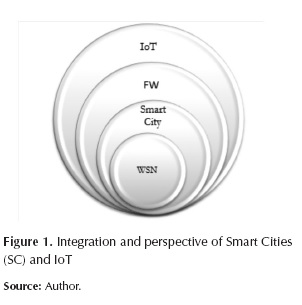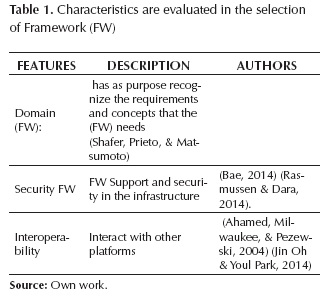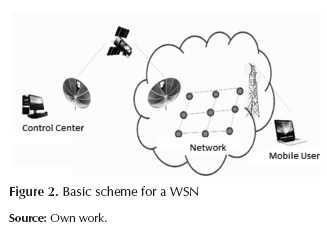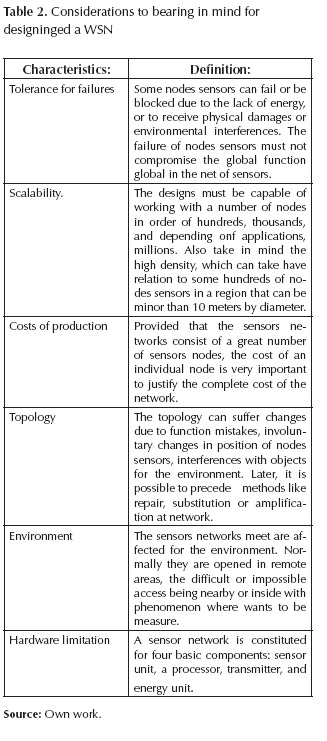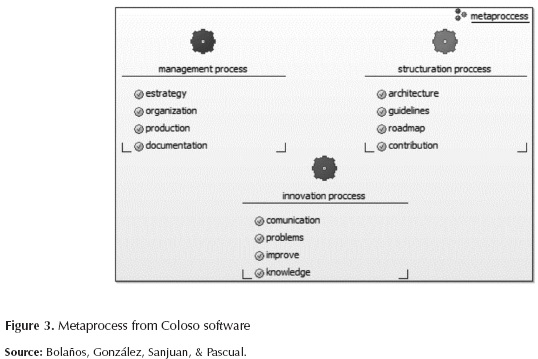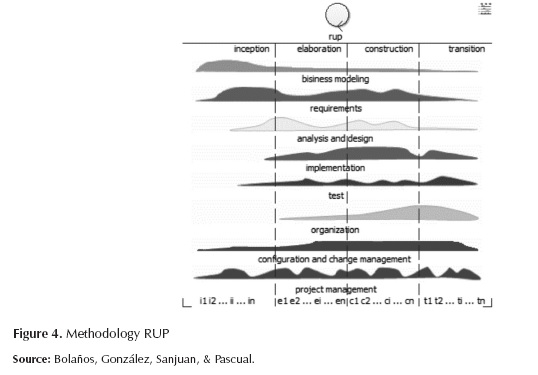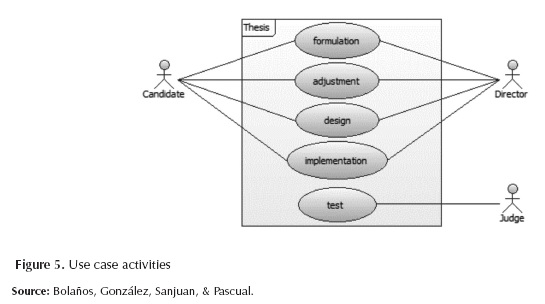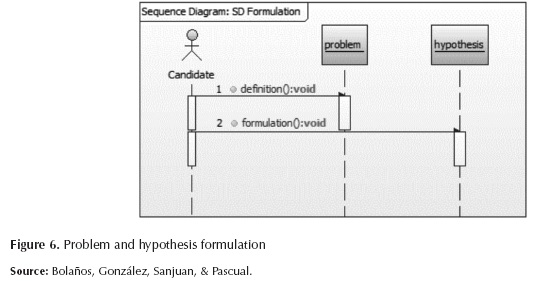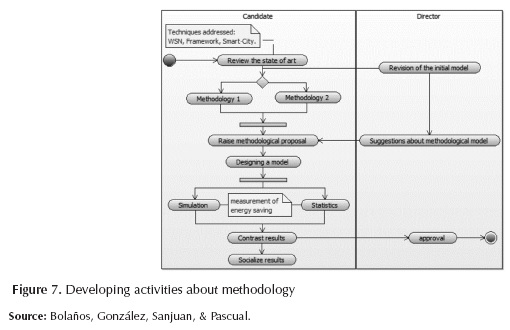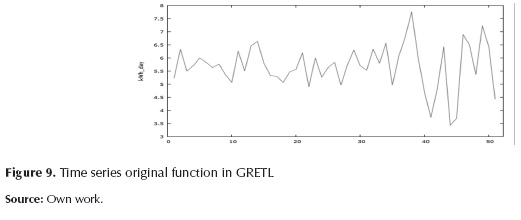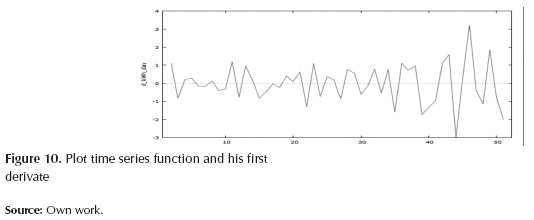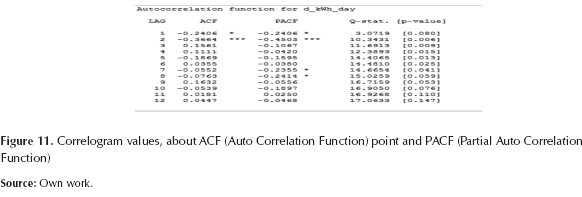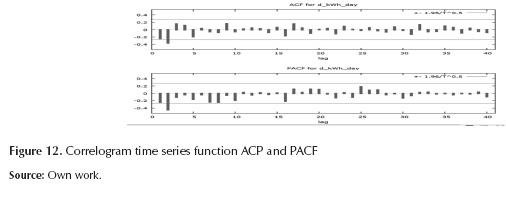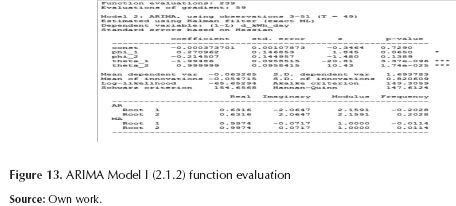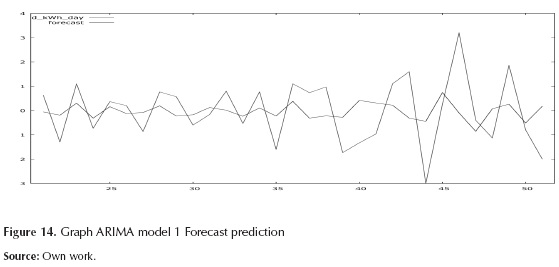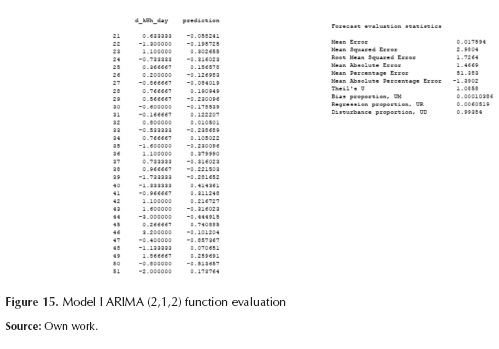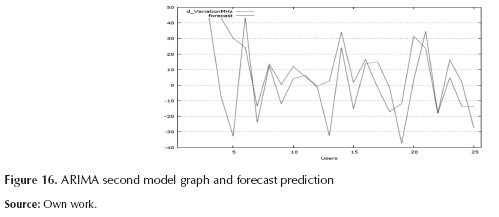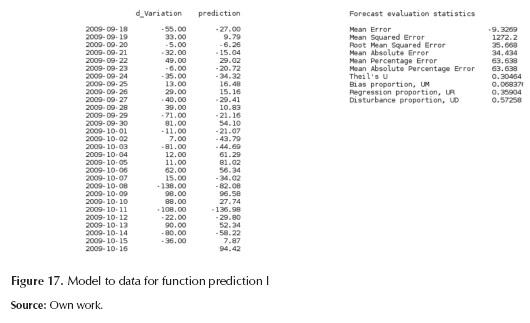Services on Demand
Journal
Article
Indicators
-
 Cited by SciELO
Cited by SciELO -
 Access statistics
Access statistics
Related links
-
 Cited by Google
Cited by Google -
 Similars in
SciELO
Similars in
SciELO -
 Similars in Google
Similars in Google
Share
Tecnura
Print version ISSN 0123-921X
Tecnura vol.18 no.spe Bogotá Dec. 2014
https://doi.org/10.14483/udistrital.jour.tecnura.2014.DSE1.a10
DOI: http://doi.org/10.14483/udistrital.jour.tecnura.2014.DSE1.a10
Development of a uml framework for smart cities with forecasting electrical consumption in Colombia
Desarrollo de un marco de referencia uml para ciudades inteligentes con predicción de consumo eléctrico en Colombia
Ricardo Alirio González Bustamante*, Roberto Ferro Escobar**, Giovanni Tarazona Bermúdez***
* Electronic Engineer, Master in Teleinformática. PhD Student, Teacher-researcher at the Autonomous University of Colombia. Faculty of Engineering. Bogotá, Colombia. gonzalez.ricardo@fuac.edu.co
** Electronic Engineer, PhD in Computer Engineering. PhD Coordinator, District University Francisco José de Caldas. Faculty of Engineering. Bogotá, Colombia. rferro@udistrital.edu.co
*** Systems Engineer, PhD in Software Engineering, District University Francisco José de Caldas. Faculty of Engineering, Bogotá, Colombia. gtarazona@udistrital.edu.co
Fecha de recepción: June 10th, 2014 Fecha de aceptación: November 4th, 2014
Citation / Para citar este artículo: González Bustamante, R. A., Ferro Escobar, R., & Tarazona Bermúdez, G. (2014). Development of a UML framework for smart cities with forecasting electrical consumption in Colombia. Revista Tecnura, 18 (Edición especial doctorado), 109-123. doi: 10.14483/udistrital.jour.tecnura.2014.DSE1.a10
Abstract
The following article describes a proposal that aims to plan and develop a framework for Smart cities using modeling by UML through the Colossus software tool. Further design analysis applied to Smart cities based on wireless sensor networks is developed.
The analysis is proposed using ARIMA time series for finding a correlation of consumption of electricity in 50 Colombian homes and a possible forecast if it were used iInternet of things (IoT) as a possible method to save on electrical energy consumption.
Keywords: ARIMA, Framework, Gretl, Smart cities, UML, WSN.
Palabras clave: ARIMA, Ciudades inteligentes, Framework, Gretl, UML, WSN.
Introduction
The scientific investigation has a method, and this one has, your approaches and exceptions as well as your dimensions, with the possibility of using one or another way of the method. When an investigation is done in the technological field, it is necessary to use technological strategies, which validate the results obtained across a software development of software;. This article they presents the results of the utilization of the Unified Language Unified of Shaped UML (Bolaños, Gonzaález, Sanjuan & Easter, s. f.) to shape the graphs of case of use, sequence, of class and activities with support in the tool named Coloso (Bolaños, González, Sanjuan, & Pascual ) (Bolaños, Medina, & Carrión, LACCEI, 2011).; Thise paper presents an analysis relationing the Engineering software (IS) using the Language of Shaped of Processes and Methodologies of Software [LMMPS] (Bolaños, Medina & Carrión, LACCEI, 2011). The approach to realizing carry out will combine the investigation and technology, with IS technics of the (IS).
LANGUAGE MODEL AND METODOLOGIC PROCESS OF SOFTWARE (LMMPS)
The concepts of grammar are described to construct words of a certain language. The intention aim is generating a vocabulary of expression for the frame of a (SC).
1) The gGrammar with phrases structure consists of a vocabulary V, a subset T of V formed by the end effectors and initial symbol S of V - T and a set P of productions (Bolaños S., 2014; Rosen, 2004).
2) The vVocabulary (V) is a finite set and non-empty, the elements are called symbols, where a word on V is a finite chain of elements of V (Bolaños S., 2014; Rosen, 2004).
It is necessary to define the language generated for G, L (G)
For a consistent set of aspects where IoT (Internet of Things) is, the Internet of the things and FW (Framework) is the working space or referential frame.
Therefore, if WSN SC are elements of the set FW;, then, because each element of C sublies is contained in IoT.
IoT is a function of FW, (Framework) SC , (Smart Cities),and WSN (Wireless Sensor Networks), where it is possible to verify and validate. Wifhere IM is defined as Internet in Movement.
Next, it presents a general graph of the services classification, in the top part appears (IoT), which wraps the (FW), the (SC) and (WSN). The structures WSN sublies before the (SC) and this one sublies before the (FM), which forms a part integral of (IoT).
PRECEDENTS AND CURRENT STATE OF THE ART
The conceptual development of this project is necessary to understand four big components: (IoT), ( FW), (WSN), (SC); the comprehension and deepening of these subject matters, the props of this offer, will depend ofn the design that is achieved in a great extent with the success of the same one.
Internet of the (IoT)
Defined as a global infrastructure based on standards and communication protocols where the physical and virtual "things" are equally integrated with the network information. Important and essential part of IoT are the sensors (Vergara Carabeño & June, 2013).
Framework (FW)
A frame of reference is used as a development pattern of an application, though it is a wide definition, this designation because it can remove the different levels of software development (Ffor a complete application defined, application web, until focusing in an unique aspect, user interface) (Cavaness, 2003), being versatile without requiring a language of programming. [FW] is defined also as a set of bookshops, designed to give support in the development of sites generating the construction of any web application (Lyman, 2009). A [FW] facilitates with common activities realized carried out during the development of the application (Brandon & Brandon, 2008).
Some characteristics are evaluated in the table 1:
The Framework (FW) design is necessary to take in mind allowing total access and control at sensors network, for any device with connectivity.
Wireless Sensor Network (WSN)
WSN are networks for small nodes that working to obtain a common objective with resources of accused and computation limited. In the beginning of this evolution, the nodes were big distant stations, spatially and the communication would take place across an infrastructure wired up (Akyildiz, Weilian, Sankarasubramaniam, and & Cayirci, 2002). Since then different investigations have been developed in order to improve of the sensors in caps: physic, link and network optimizing for the processes of transmission with the objective, diminishing the energy consumption (AUTELSI (Association), 2006). Nowadays, the communication is wireless and when exists an exchanges of information between nodes conforms a networks (Hao, Xue, Yan, and & ChunLi, 2012). It is necessary to take control that supervises the connections between the net, as the information is caught by the sensors networks; in general, the information is bidirectional for user to the net and vice versevice versa. This scheme is shown in Figure 2.
Some considerations to bearing in mind for designinged a WSN are described in table 2.
Authors whom works in this topics are: (Liyanage & Marasinghe, (2013), (Kehua, Jie, & Hongbo, (2011), (Elmangoush, Coskun, Wahle, & Magedanz, (2013), (Karnouskos & de Holanda, (2009) (Chourabi, y otroset al., (2012), (Chaonan, Liudong, Vinod, & Yan Lindsay, (2014).
Smart City (SC) and Digital City
Knowning as Digital or Intelligent City, is considered as an city "intelligent"" city when the investments in the human and social capital, and a traditional infrastructures in a traditional communication (transport) and modern (ITC), they foment an economic development and a high quality of life, knowing the management of natural resources, across a participative government (AUTELSI (Association), 2006) (Hao, Xue, Yan & ChunLi, 2012) (Liyanageand Marasinghe, 2013).
Digital city: is a virtual space of interaction between all the actors whom take part in the life of a city, citizens, companies, administrative, visitors, - using the support of the electronic and the information, and communication technologies and communication (TicsICTs), offering the above mentioned actors, the access like an innovative way of relation and communication, across the channel that they choose, in any moment and place (Kehua, Jie & Hongbo, 2011; Elmangousch, Coskun, Wahle & Magedanz, 2013; Kamoouskos & Holands, 2009; Chourabi et al., 2012).
PROBLEM DEFINITION
The high consumption of electrical energy with in the big cities and every time scanty generation of the same one, generating a crisis in the energetic sector; it is not enough to create saving policies, saving but also it is necessary the implementation of intelligent networks that allow manage the energetic saving (Krishnamachari & Ordónez, 2003). Some disadvantages could be nowadays exists and is related to the energy consumption.
METODOLOGY:
Metaprocess definition:
"The significant problems we have cannot be solved at the same level of thinking with which we created them". Albert Einstein.
For the development of reference frame was used UML that is a language that allows shape, construct and document the elements that form a system in object orientated software.; iIn the present article - there will develop the model of software Metaprocess (Bolaños, González & Easter, s. d.; Bolaños, Medina &Carrión, LACCEI, 2011). The Metaprocesos (Gracanin, Eltoweissy, Olariu & Wadaa, 2004), is defined as process models who which are going to serve as referential frame, and they help with a graphical scheme of representation. Three big processes are distinguished: management, structure and innovation.
The process management, is shaped by the strategy, organization, production and documentation. In Coloso is possible to estimate in a graphical and pedagogic way 3 processes that shape a Metaprocess. (figure 3).
As a strategy, the holistic looks about problem and the hypothesis; the strategy or process selected RUP (Rational Unified Rational Process) (Peng, Wang, Have & Zhao, 2012), the life cycle is usesd in cascade (Royce, 1970), allowing the generation of a software in an UML environment UML, design, develop and visualize processes;, simplifying the complexity of the designs, processes and creating a development without equally. The process RUP assigns tasks and responsibilities,; shaped by the strategies: business models, requirements, analysis and design, implementation, checking, between among others.
Additionally, the RUP administrates the requirements, which are dynamic during the project, develops the iterative software, develop sand the software visually, evaluates the system quality with regards to the functionality, uses an architecture based on components and establishes repetitive processes to manage the changes of software (Flórez, 2009; Abranson, 2002; Kasaju, 2013) This process is shown in the Figure 4 shows this process.
For the particular case that occupies us, the model of business is represented in Figure. 4.
The use case, describes the general activities in the development of the (FW)] for - SC - (Elmangoush, Coskun, Wahle & Magedanz, 2013). Three actors decided the Ph.dD candidate, the director and judge, where are represented the general activities that will allow to develop and give solution to the project;, this one is composed for five activities:, formulation, adjustments, design, implementation, tests and socialization for the results in the academic community.
The following provides developments of the formulation activity, in which the thesis taking part in problem approach and investigation hypothesis who will find be resisted. These processes are shown in the Figure 6 shows these processes.
Taking again the Sstrategy about Metaprocess, begins the specification of the activities, which will be orientated to project objective, which is developed in a Frame of Reference for Intelligent Cities controlling a sensor wireless network in Smart City applications,. tThis allows the energetic saving, ias shown in figure 7.
In the project developing of project are definite two actors:, the director and the candidate Ph.D; with the following function review the state of the art state condition, including the approached subject matters (WSN), (FW) and (SC). Once the previous task has been realized carried out and agreement with results obtained, it will be decided, by mutual agreement, a specific methodology to identify the methodological offer that will include the suggestions realized given by the director, the bidder will realize carry out part of design in a model (FW) who will be used in the simulations accomplishment and statistics which have information about energy consumption in homes respect to the level; the contrasting results will be realizedmade. This point is important because here culminatingends the traceability reached by the director; later, results obtained will socialize previous approval by the director.
The activity appears the contrasts Figure 8 in which present the results, conclusions and confronts with the judge for your checking. This activity is conducted through checking the hypothesis of investigation.
STUDY OF AN APPLICATION OF ENERGY SAVING AT HOME AND FORECAST
The first forecast, the home energy consumption performed measurements of 50 home conformed by 4 persons who consumed around 4-6 kWh per day, there were extracted from the samples to be included in the Autoregressive Integrated Moving Average (ARIMA) model (Pulido, 2001). Mathematical models are a class of stochastic processes used to analyze time series is dueaccording to Box and Jenkins model., wWe used a GRETL free software, which to analyzed the statistical behavior and represented through a graphical interface will be used.
The Table 3 data kWh-day for 50 home user´s, are represented in the following GRETL graphic:
After analyzing the statistical behavior, it is necessary to take the first difference occursas shown in the Figure 10:
This difference gives the graph of its Correlogram, which has ACF (Auto Correlation Function) point and PACF (Partial Auto Correlation Function) points.
To perform observation users are taken as samples 40 crews is 80% and 20% is left to perform the prediction is shown in figure 12 Correlogram.
According to the coefficients obtained from the autocorrelation functions and partial autocorrelation prediction models based on the coefficients p (Rho) AR(2) = -0,.3664 , q1 q2 MA(2) = -0, 4503, and q2 MA(7) = -0, 2355, with and their ARIMA model combination ARIMA (2,1,2) from the equation 1:
From the data provided in Figure 14 may function prediction plot for 50 samples in red differentiated function is presented and the corresponding forecast.
The Figure 15 presents the exact data for the differentiated function and data for function prediction also calculated the RMSE (Root Mean Square Error):
From the data provided in the Figure 15 may function prediction plot for 50 samples in red differentiated function is presented in the Figure 16 red and the corresponding forecast.
The Figure 17 presents shows the exact data for the differentiated function and data for function prediction also calculated the RMSE (Root Mean Square Error):
Results
In the graphs Figure 18 appears the percentage used from UML perspective;, the approach was guided by percentage of utilization, which was 77 %, versus the total graphs of UML language, as well as the use diagram disaggregated that is 11 %.
The ARIMA models have been applied to predict the behavior energy consumption in home, from a growing number de of peoples in a city, respectively. The Figures 12 and 13 corresponds to the Autocorrelation function for ACF, PACF. Behavior prediction is similar and is in agreement with the data included for the 50 samples submitted monthly consumption in households. Thus it is possible to make predictions much larger and that they are commensurate with the energy savings that can be estimated in the future near future.
CONCLUSION
A formal investigation process, can be realized carried out using IS's methodology, with Coloso protocol A key search is utilization of approach based on independent components from technology, accompanied along with of a methodology that facilitates the model interpretation combines the (IS) with our offer. The mixed investigation methodologies and generating models software (IS) who which explain the problem.
The integration of software engineering UML diagrams and modeling engineering problems based on efficient as those used by software developers methodologies, can integrate these aspects with problems related to smart cities., iIn our case, to predict consumer behavior of electrical energy in homes and predicting them in and near future and thus achieving create predictive models of behavior.
References
Abranson, P. (2002). Agile Software Development Methods Review and Analysis. VTT. [ Links ]
Ahamed, S., Milwaukee, W., & Pezewski, A. (2004). Towards framework selection criteria and suitability for an application framework. Information Technology: Coding and Computing, 2004. Proceedings. ITCC 2004. International Conference on (Volume:1 ), 1, 424-428. [ Links ]
Akyildiz, I., Weilian, S., Sankarasubramaniam, Y., & Cayirci, E. (2002). A survey on sensor netwokrs. IEEE Communications Magazine, 102-114. [ Links ]
Androlaki, S. et al. (2014). Proposing a Smart City energy assessment framework. IEEE Information, Intellingence, System and Aplications IISA. [ Links ]
AUTELSI (Associatioón). (2006). Elementos básicos para una ciudad digital. España: Documento elaborado por el grupo de trabajo de ciudades digitales. [ Links ]
Bae, Y. (2014). A scalable user interface framework for multi-screening. Consumer Electronics (ICCE), 2014 IEEE International Conference on (pp. 408 - 409). Las Vegas, NV. [ Links ]
Bolaños, S. (2014). Software Processes and Methodologies Modeling, Language -SPMML- Holistic Solution for Software Engineering. IEEE Latin America Transactions, 818- 824. [ Links ]
Bolaños, S., González, R., Sanjuan, O., & Pascual , J. (n.d.). Coloso-. A Development Environment Centered Process and Intent. [ Links ]
Bolaños, S., Medina, V., & Carrión, J. (2011). LACCEI. Marco conceptual para el metaproceso de desarrollo de software. Medellín-Colombia. [ Links ]
Bolaños, S., Medina, V., & González, R. (2014). Software Processes and Methologies Modeling Language-SPMML- A Holistic Solution for Software Engineering. Latin America transactions. Vol. 4. [ Links ]
Brandon, D., & Brandon, C. (2008). Software Engineering for Modern Web Applications: Methodologies and Technologies. Estados Unidos : Information Science Reference. [ Links ]
Bulusu, N., Estrin, D., Girod, L., & Heidemann, J. (2001). Scalable coordination for wireless sensor network self-configuring localization systems. Proc. 6th IEEE International Symposium on Communication Theory and Application. [ Links ]
Buratti, C., & Giorgetti, A. (2007). Cross-Layer Desingn of Energy Efficient Cluster Formation Algorithm with Carrier Sensing Multiple Access for Wireless Sensor Networks. EURASIP Journal on Wireless Communications and Networking. [ Links ]
Cavaness, C. (2003). Programming Jakarta Struts. Sebastopool: O'Reilly & Associates, Inc. [ Links ]
Chaonan, W., Liudong, X., Vinod, V., & Yan Lindsay, S. (2014). A phased-mission framework for communication reliability in WSN. Reliability and Maintainability Symposium (RAMS), 2014 Annual, 1-7. [ Links ]
Chourabi, H. et al. (2012). Understanding Smart Cities: An Integrative Framework. System Science (HICSS), 2012 45th Hawaii International Conference on. Maui, HI. [ Links ]
Elmangoush, A., Coskun, H., Wahle, S., & Magedanz, T. (2013). Design aspects for a reference M2M communication platform for Smart Cities. Innovations in Information Technology (IIT), 2013 9th International Conference on. Abu Dhabi. [ Links ]
Emara, K., Abdeen, M., & Hashem, M. (2009). A gateway-based framework for transparent interconnection between WSN and IP network. EUROCON 2009, EUROCON '09. IEEE, 1775-1780. [ Links ]
Ferro, R., Gonzáalez, R., & Velazco, S. (2013). Use of ARIMA mathematical analysis to model the implementation of expert system courses by means of free software OpenSim and Sloodle platforms in virtual university campuses. Expert Systems Wwith Applications. ISSN: 0957- 174. Ed: Elsevier. v. 40, 8381-7390. [ Links ]
Flórez, H. (2009). Procesos de Ingeniería de Software. Víinculos, 26-39. [ Links ]
Gracanin, D., Eltoweissy, M., Olariu, S., & Wadaa, A. (2004). On modeling wireless sensor networks. Parallel and Distributed Processing Symposium, 2004. Proceedings. 18th International. [ Links ]
Hao, L., Xue, L., Yan, Z., & ChunLi, Y. (2012). The application and implementation research of smart city in China. System Science and Engineering (ICSSE), 2012 International Conference on (pp. 288 - 292). Dalian, Liaoning. [ Links ]
Jin Oh , B., & Youl Park, J. (2014). A remote user interface framework for collaborative services using interconnected smart devices. Advanced Communication Technology (ICACT), 2014 16th International Conference on, 630 - 634. [ Links ]
Karnouskos, S., & de Holanda, T. (2009). Simulation of a Smart Grid City with Software Agents. Computer Modeling and Simulation, 2009. EMS '09. Third UKSim European Symposium on. Athens. [ Links ]
Kasaju, A. (2013). Analysing an automative testing process with evidence-based software. Information and Software Teachnology, 1237-1259. [ Links ]
Kehua, S., Jie, L., & Hongbo, F. (2011). Smart City and the Applications. Electronics, Communications and Control (ICECC), 2011 International Conference on. [ Links ]
Krishnamachari, B., & Ordonez, F. (2003). Analysis of energy-efficient, fair routing in wireless sensor networks through non-linear optimization. Vehicular Technology Conference, 2003. VTC 2003-Fall. 2003 IEEE 58th, 5, 2844 - 2848. [ Links ]
Liyanage, C., & Marasinghe, A. (2013). Planning Smart Meal in a Smart City for a Smart Living. Biometrics and Kansei Engineering (ICBAKE), 2013 International Conference on. Tokyo. [ Links ]
Lyman, F. (2009). Pro Zend Framework Techniques: Build a Full CMS Project. Estados Unidos: The Zend Press Series. [ Links ]
Peng, H., Wang, J., Han, Y., & Zhao, Q. (2012). Novel WSN-Based Residential Energy Management Scheme in Smart Grid. International Conference on Information Science and Technology. [ Links ]
Pilone, D., & Pitman, N. (n.d.). Retrieved enero Jan 10, 2014, from http://www.it-ebooks.info/book/154. [ Links ]
Pulido A, G. J. (2001). Modelos Eeconométricos. Madrid: Pirámide. [ Links ]
Rasmussen, C., & Dara, R. (2014). Recommender Systems for Privacy Management: A Framework. High-Assurance Systems Engineering (HASE), 2014 IEEE 15th International Symposium on. Miami Beach, FL. [ Links ]
Riliskis, L., & Osipov, E. (2013). Symphony: Simulation, emulation, and virtualization framework for accurate WSN experimentation. Software Engineering for Sensor Network Applications (SESENA), 2013 4th International Workshop on, 1-6. [ Links ]
Rosen, K. (2004). Matemática discreta. Nueva York: Mc Graw- Hill. [ Links ]
Royce, W. (1970, Agosto). Managing the development of large software. IEEE, 26, 1-9. [ Links ]
Saha, S., & Matsumoto, M. (2007). A framework for disaster management system and WSN protocol for rescue operation. TENCON 2007 - 2007 IEEE Region 10 Conference, 1-4. [ Links ]
Shafer, W., Prieto, R., & Matsumoto, M. (n.d.). Software Reusability.1994: Ellis-Horwood Ltd. [ Links ]
Vergara Carabeño, M. A. (Junio de 2013). Redes de Comunicaciones en Smart Cities.-Trabajo Tesis de Maestría. Castilla, España: Universidad de Castilla - La Mancha. [ Links ]
Zhao, F., & Guibas, L. (2004). Wireless Sensor Network: An information processing approach. San Francisco: Morgan Kaufmann Publishers. [ Links ]













